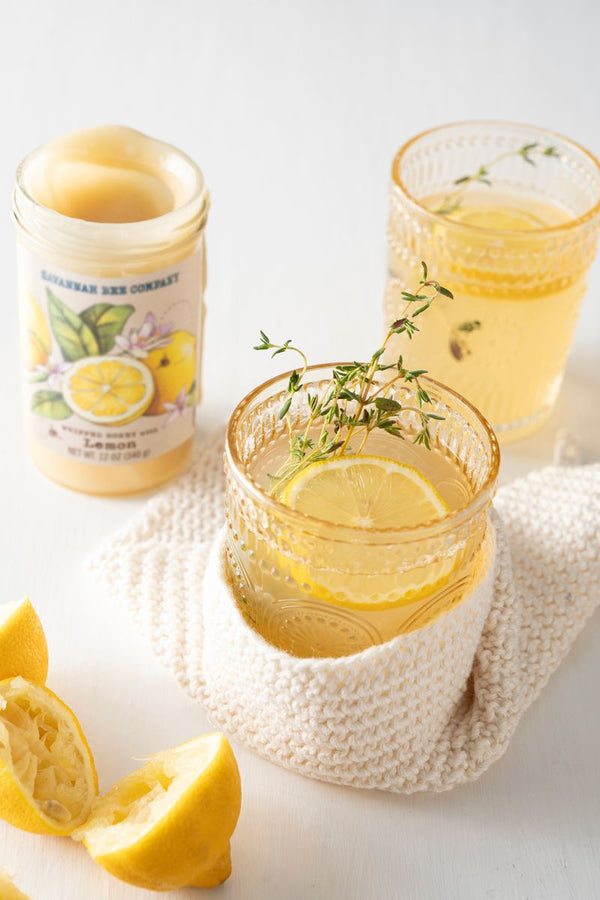The Birthplace of Tupelo Honey
To some, the wetlands of the Okefenokee, Apalachicola and Altamaha are a paradise. They are more than a swamp, they are a refuge for diverse wildlife, and the cradle of one of the world's most prized natural products: tupelo honey.
The tupelo tree, AKA the white tupelo or Nyssa Ogeche, thrives almost exclusively in the river basins of the Southeastern United States.
“There are multiple species of tupelo, but the tupelo we get our honey from is the Nyssa Ogeche. And Nyssa Ogeche means water nymph of the Ogeche. Isn’t that beautiful?” Ted Dennard, founder of Savannah Bee Company, has worked with tupelo for several decades, learning as much as he can about the trees and the unique ecosystem they build.

Tupelo is perfectly suited to the swampy, water-logged conditions of the Apalachicola and Altamaha river basins, where it forms extensive forests, shading the wetlands with their lush, green canopies. The white tupelo is particularly notable for its resistance to rot and it's beautiful, fragrant flowers, which are a crucial part of the tupelo honey-making process.
Another variety, the black tupelo or Nyssa Sylvatica, also grows in these areas, though the white tupelo is beloved for its honey due to its high fructose content, which prevents the honey from crystallizing. And it’s just all around better flavor.
Ted explains, “There’s a lot of confusion around tupelo, but there’s only one good tupelo honey. You can lick the damn flower and see that’s what it’s supposed to taste like.”

For the Love of Tupelo
The tradition of collecting tupelo honey in the swamps of south Georgia and northern Florida has roots that run deep into the history of the region.
Native Americans were the first to recognize the value of these trees and the unique honey produced from their flowers, and the practice was later adopted by European settlers, who began to harvest tupelo honey in the 19th century.
Tupelo honey harvesting is a labor of love and patience. Beekeepers place their hives in the swamps, either on barges or on stands, during the brief blooming season of the tupelo trees, which lasts for approximately two to three weeks in late April and early May. “For Tupelo, we have so many amazing beekeepers, and we have to get 50 tons a year. Beekeeper Joe in west Florida, Sergei, and a guy named George that uses barges.”
“To survive the tupelo needs to be at least 8 feet deep under water,” Ted explains. “Once they leaf out, they drink up all the water. Then you can get the bees in there. Haul them out on trailers. Put them up high enough that if the water rises they’ll be fine.”

This short window is crucial for producing pure tupelo honey, which is prized for its light, buttery sweetness and the complexity of its flavors, without the risk of the honey being mixed with nectar from other flowers. “A light yellow color with a greenish cast - that’s the tupelo honey that you want.” Anything else and you know it’s not from white tupelo trees.
“The goal is to get your bees in the heart of the grove so they can get as much Tupelo as possible. And the bees LOVE it.”
Tupelo and the Bees
The relationship between bees and tupelo trees is pure magic. Bees are attracted to the tupelo flowers because of their abundant nectar, rich in high-quality sugars. Ted admits, “I did an experiment one time. I put a bowl of tupelo honey out and a bowl of a different honey, and the bees flocked right to the Tupelo. They love it. Just like me.”
As endangered ecosystems, the tupelo swamps need the bees too. The bees play a critical role in the tupelo trees' life cycle by pollinating the flowers and ensuring the continued survival of this unique ecosystem. The bees' work allows the trees to reproduce and maintain the health and biodiversity of the tupelo swamps.
The Legacy of Tupelo Honey
“I was canoeing in the mid 90s, and I ended up under this tree. It was just alive with buzzing. I got out of my canoe and climbed up the tree, and, man, it swarming with bees! I had heard about the tupelo and I knew this had to be it. Next time I went back out there I tried to get my own tupelo honey - and it was not good. I tried and tried again, and it wasn’t until 1999 that I got my first good batch. And it was so good, man. Hands down the best honey I had ever had. That’s why I put it in the wine bottles. I needed people to know it was real, good honey.”

And that was the beginning of Savannah Bee Company. A beekeeper falling in love with the natural bounty of the tupelo wetlands and wanting to share that love with others. Ted started off with a passion for bees and a wine bottle filled with tupelo, and over 20 years later the heart of the mission remains the same. Find the finest honey, share it with the world, and do our best to be the voice for the bees.
#savethebees
Tupelo Honey
$29.00
$29.00
Published













